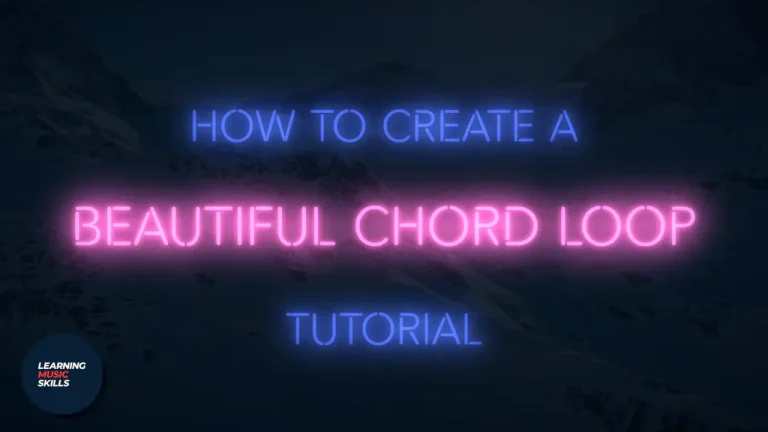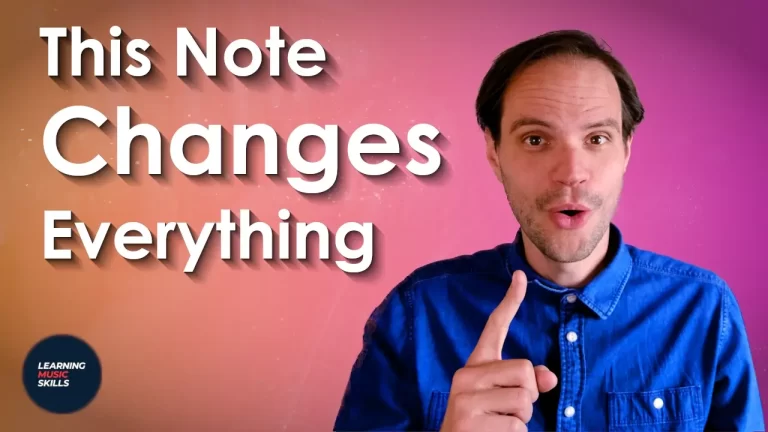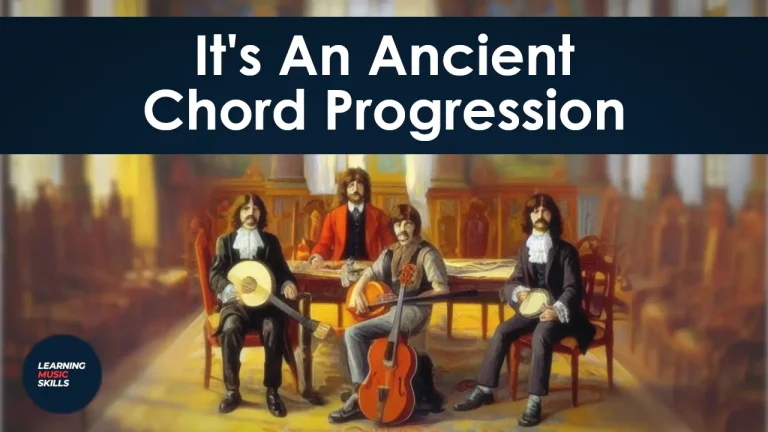The Mixolydian mode is amazing and inspiring! This musical mode is the fundament of many different styles and can convey deep emotions. The options are almost limitless. But how do you write Mixolydian chord progressions or melodies? Let’s find out and let’s get creative!

The free tutorials and articles from Learning
Rock artists, film composers, jazz musicians, and singer-songwriters have all used the Mixolydian mode. And with great success. The
Video Tutorial: Make Mixolydian Progressions and Melodies
If you want to hear all these examples with real
Modes made easy: Many people see the musical modes as being part of a bigger mode or parent scale, which is the Ionian mode. But 90% of the time I don’t approach it this way. I like to see each mode as a separate scale. So it’s not part of something bigger. Mixolydian is what it is and not some kind of small brother from the major scale.
I will explain how you make a Mixolydian scale and chord progression. And even you can use this for writing beautiful melodies and full songs. Just follow these three steps below.
How to write
- Take a major scale and lower the 7th note half a step
- Create a chord/triad on each scale degree
- Focus your chords and melody on the lowered 7th-scale degree, root, and major 3rd
How do you make a Mixolydian scale?
When we talk about
C Major: To start we have to make a major scale. And I hear you thinking “but you just said Mixolydian is a separate scale?”. Yes, it is, but for clarity, I like to refer to the major scale. Just bear with me.
All the musical modes or church modes as they’re sometimes called can be referred to as being major or minor-oriented. What this means, is that the 3rd note in the scale is major or minor. The major-oriented modes we derive from the major scale and the minor-oriented modes we derive from the natural minor scale.
How do you make a Major scale?
The Major scale consists of 7 unique tones. To make a major scale in any key you need to follow this fixed formula of whole and half steps. Whole Step – Whole Step – Half Step – Whole Step – Whole Step – Whole Step – Half Step. Just keep in mind when naming the notes, that each step needs to be a different letter from the alphabet. So you cannot have C and Cb or A and A#. It should be C and B or A and Bb.


How do you make a Mixolydian scale?
Remember our C major scale from above? To make the C Mixolydian scale, you just lower the 7th note or the note on the 7th scale degree with half a step. The rest of the notes in the scale stay the same! So the formula for making a Mixolydian scale is: Whole Step – Whole Step – Half Step – Whole Step – Whole Step – Half Step – Whole Step


Here is another example. The A major scale contains the following notes: A-B-C#-D-E-F#-G#

The A Mixolydian scale contains these notes: A-B-C#-D-E-F#-G. So as you can see they only differ by half a step. It is the note on the 7th scale degree.

How To Make Mixolydian Mode Chord Progressions
We will use the Mixolydian scale to find out what chords you can play or what chords you have in this musical mode. You need to create a chord or triad on each scale degree. And you do this by only using notes from the scale!
How do you make a triad? When you make a chord, just skip one scale tone and choose the next one. So for example in A Mixolydian, the chord on the first scale degree is A major. And the notes are A-C#-E. We skipped the tones B and D.


Making seventh chords:


Chord Progression No.1 In D Mixolydian
The following example has been used in classic rock countless times. And if you watch my tutorial, you will understand why. Classic rock and the Mixolydian mode go hand in hand. Especially the chord progression that goes from the 1st to the 7th and then the 4th scale degree. I bet that when you play it you will recognize the sound immediately.
In D Mixolydian the chords on these scale degrees are D major – C major – G Major. It is a progression that has a lot of power and brightness due to all of the major chords.

Chord Progression No.2 in G Mixolydian
The next progression shows a very typical and beautiful aspect of a Mixolydian chord progression. The most notable is the movement from the major tonic chord to the minor dominant chord. The juxtaposition of major and minor sounds absolutely amazing if you ask me!
The second thing is the minor 7th which is played on the major tonic chord. Especially when it is approached in a stepwise descending motion from the tonic/root. It is a very recognizable Mixolydian melody or melodic movement.

Chord Progression No.3 in C Mixolydian
This tip is a more general tip that you can follow whenever you question how to get the Mixolydian mode sound in your chord progression. You mostly want to play chords that have the lowered 7th scale degree, which is unique to the Mixolydian mode, in it. Together with your tonic, you want these chords to represent at least half of your chord progression.
In this example, we have mainly 7th chords. But not on the tonic chord. The sound of a dominant 7 as a tonic can be too strong or colourful for many styles of

Chord Progression No.4 in F Mixolydian
The following chord progression is not specifically Mixolydian. So things are still a bit ambiguous. In the singer-songwriter example in my video tutorial only in the melody we will have the Mixolydian mode. In F Mixolydian the tone that’s unique to the mode is E flat. You can use this note wherever you like. But in this example I used it as a tension note on the G minor, which is the chord on the second scale degree. This E flat creates an extra special character that otherwise would be missing!

Chord Progression No.5 in E Mixolydian
One of the best ways of actually playing with the sound of a mode is by doing it over pedal tone. It’s easy and it sounds great. But what is a pedal tone? A pedal tone is when you hold the bass note while the chords on top change. The bass note always stays the same and sounds constantly.
With modes it is important that you sustain the tonic note as a bass note. This way you really nail down the fundamental tone. And the other chords on top they change. In mixolydian this is extremely beautiful.


Conclusion
I really find that writing
But can an entire song also be in for example the mixolydian mode? Yes it can! You just need to find the note that is unique to the mode that you want to create
Mainly use these chords and the tonic chord to strongly confirm the mode.
Interested in more videos about the musical modes? Check out my other videos on the Phrygian, Lydian, Aeolian and Dorian modes.
Your Support Matters
Support new videos by becoming a member and receive benefits in return. Or by giving a one-time donation! Help me provide free
https://www.buymeacoffee.com/musicskills









